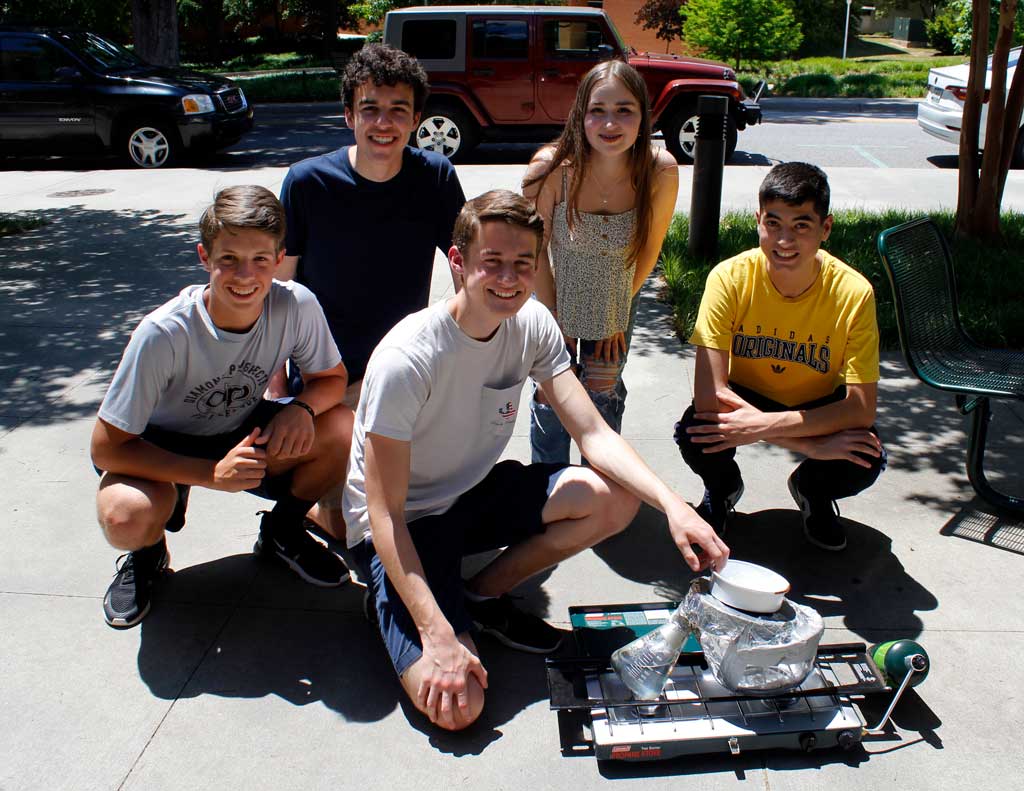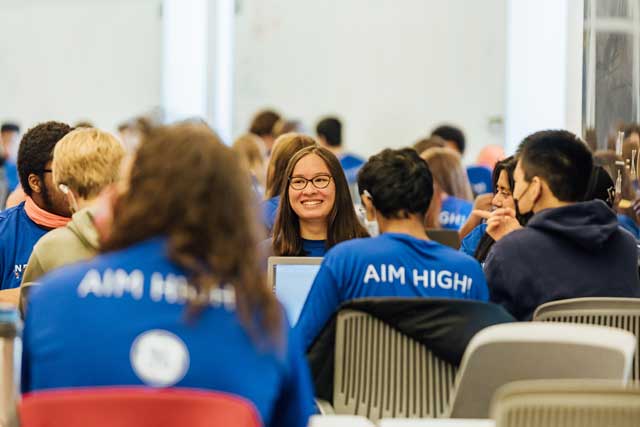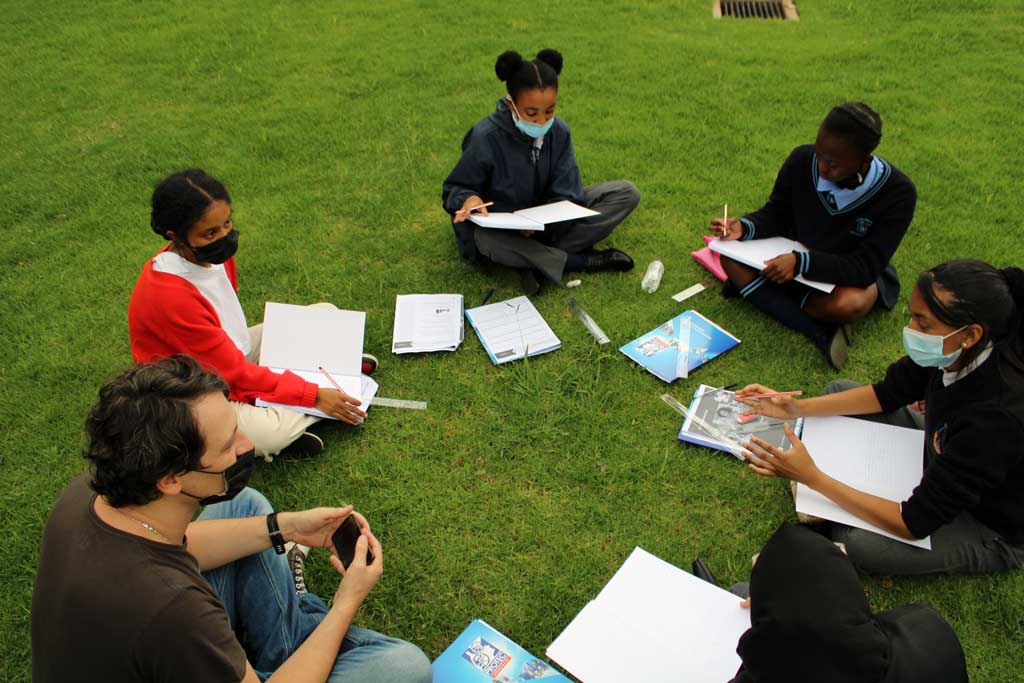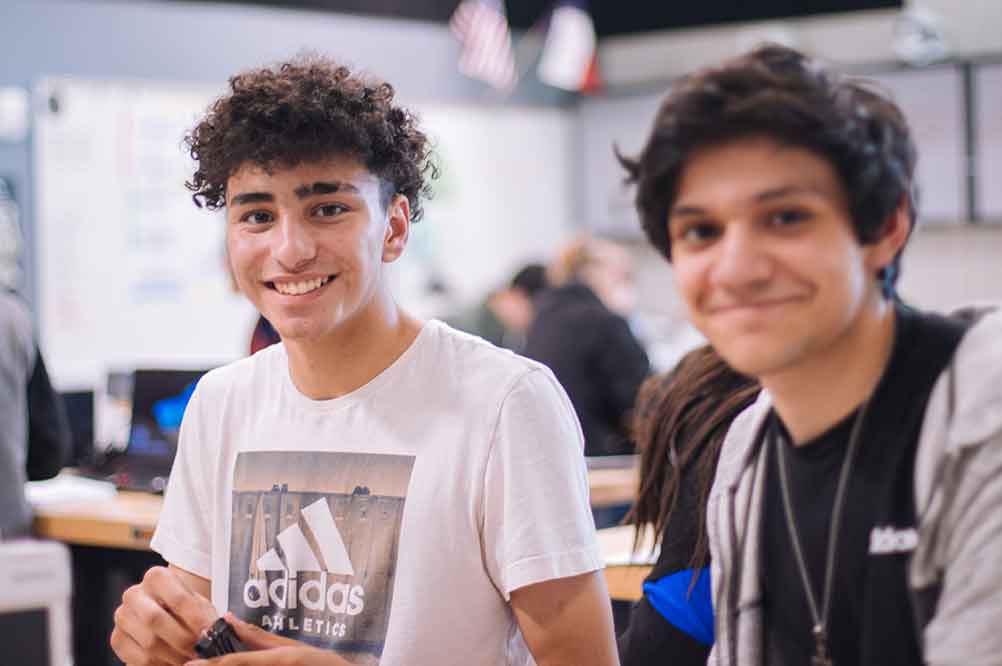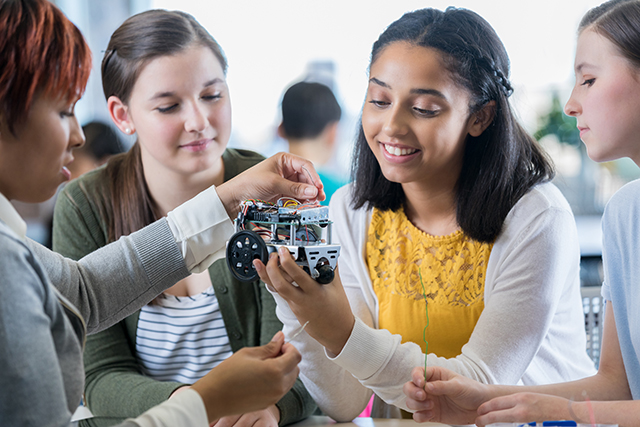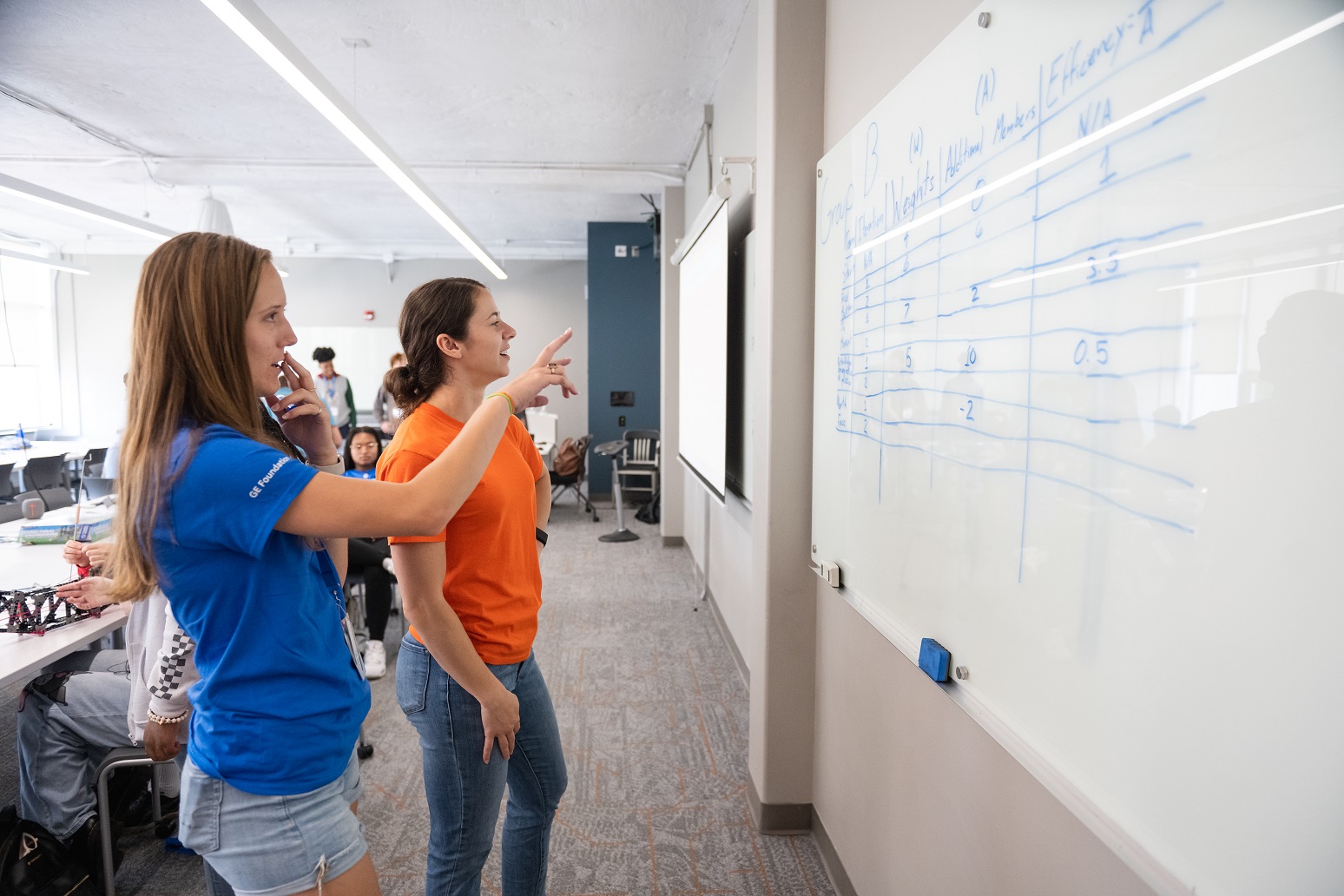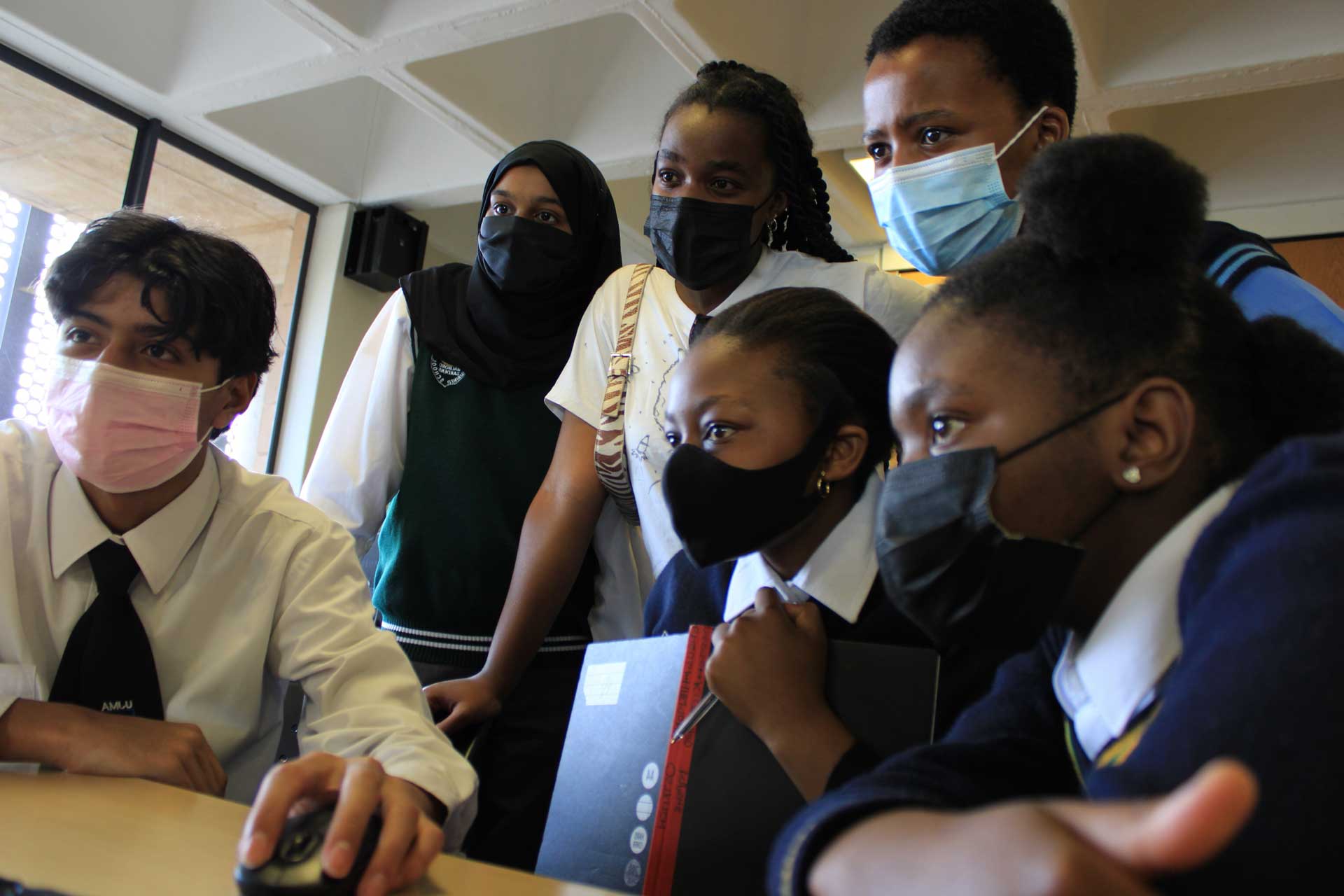

The number
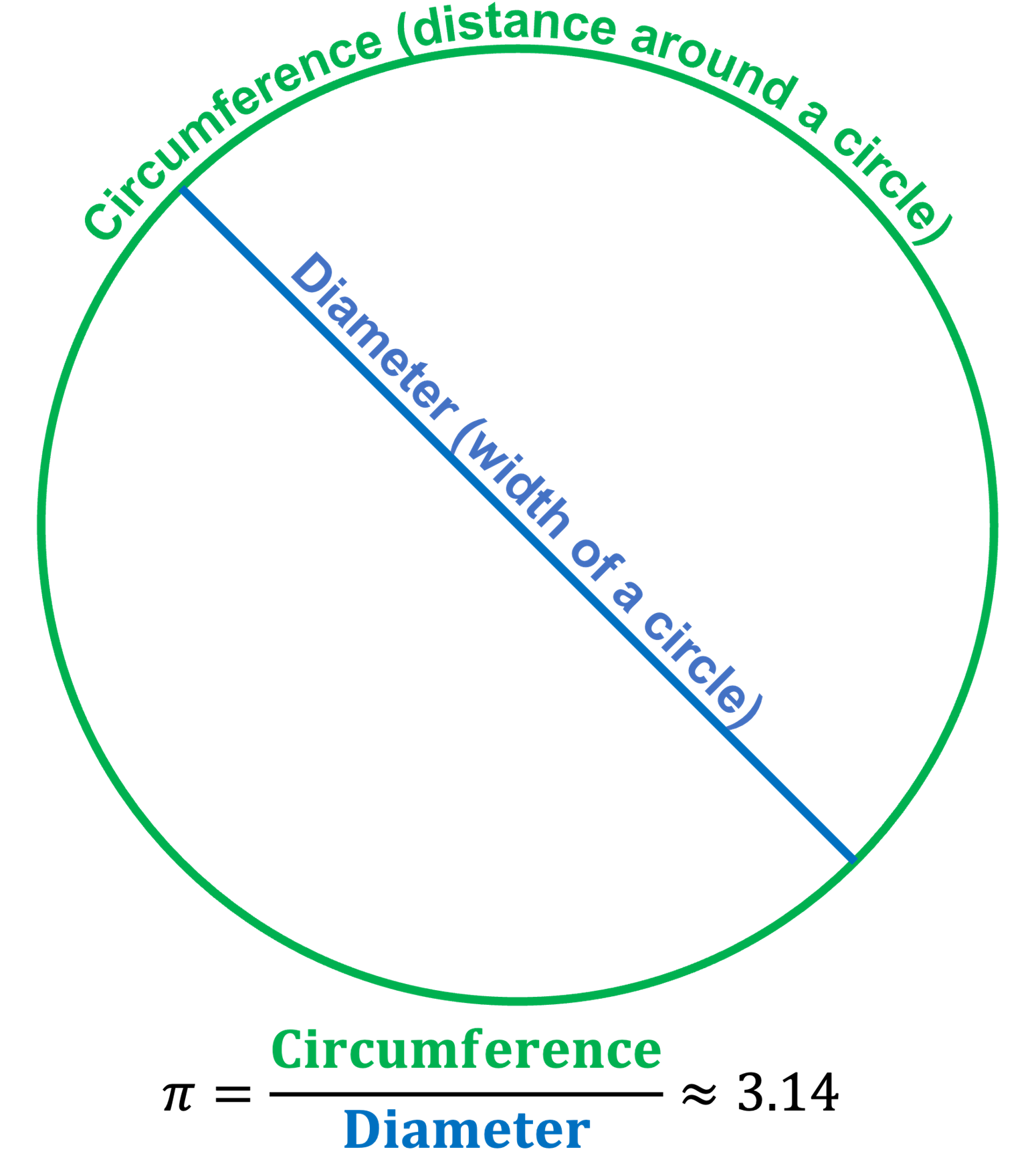
Use the Internet to find out which came first -
It does not matter how big or small the circle is,
We say that 3.14 is an approximation of
The first known method for rigorously calculating better and better approximations of
To date, we have calculated the first 62.6 trillion[1] digits of
By the way, here are the first 40 digits of
3.141592653589793238462643383279502884197
Pi is central to a great deal of mathematics. It crops up in all sorts of interesting places, not just those involving circles and spheres. One example is if you add up all the fractions where the numerator is one and the denominator is a perfect square, the answer turns out to involve
More practically,
Watch the video called The infinite life of pi (3:44) for an excellent summary of this extraordinary number:
[1] https://www.popularmechanics.com/science/math/a37329769/supercomputer-calculated-pi-to-record-breaking-628-trillion-digits/
Visit https://pi2e.ch/blog/2017/03/10/pi-digits-download/ to learn more about the world record computation of π. You can even download all 22.4 trillion currently known digits. Just note that this is not the most digits of π that have been computed. That record is currently 62.8 trillion.
If you are new to
- Take any of the round objects available and measure the length of the object’s circumference (that’s its outside edge). A good way to do this is to lay a piece of string carefully along the edge and then to lay the string along a ruler. Write this number down.
- Now measure the diameter (the straight line that passes through the center of the object from one side to the other). Write this number down.
- Use a calculator to divide the length of the circumference by the length of the diameter. What answer do you get? Is it about 3.1?
- Now repeat the above steps with as many other round objects. What number do you get at the end each time?
Mathematicians and math enthusiasts have spent many hours looking through the digits of
This video briefly explores some of the strange places
This video explores a fascinating link between the number 5 and
Attempts to calculate π ever more accurately has driven important advances in both mathematics and computer science. This video explores one of these advances.
A short explanation of why π is so important.

